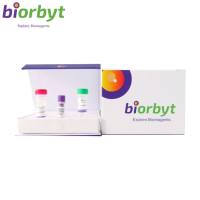Denaturing Gradient Gel Electrophoresis to Detect Methylation Changes in DNA
互联网
互联网
相关产品推荐

gel4/gel4蛋白Recombinant Neosartorya fumigata 1,3-beta-glucanosyltransferase gel4 (gel4)重组蛋白Glucan elongating glucanosyltransferase 4蛋白
¥2328

Leishmania K39 used to detect the antibody form visceral Leishmania infection 蛋白,orb2309211,biorbyt
¥10530

1 kb DNA分子量标准
¥100

Agr2/Agr2蛋白/Protein Gob-4 (Secreted cement gland protein XAG-2 homolog)蛋白/Recombinant Mouse Anterior gradient protein 2 homolog (Agr2)重组蛋白
¥69

GEL/GEL蛋白Recombinant Suregada multiflora Ribosome-inactivating protein gelonin (GEL)重组蛋白rRNA N-glycosidase;allergen Gel m RIP蛋白
¥2616
相关问答

